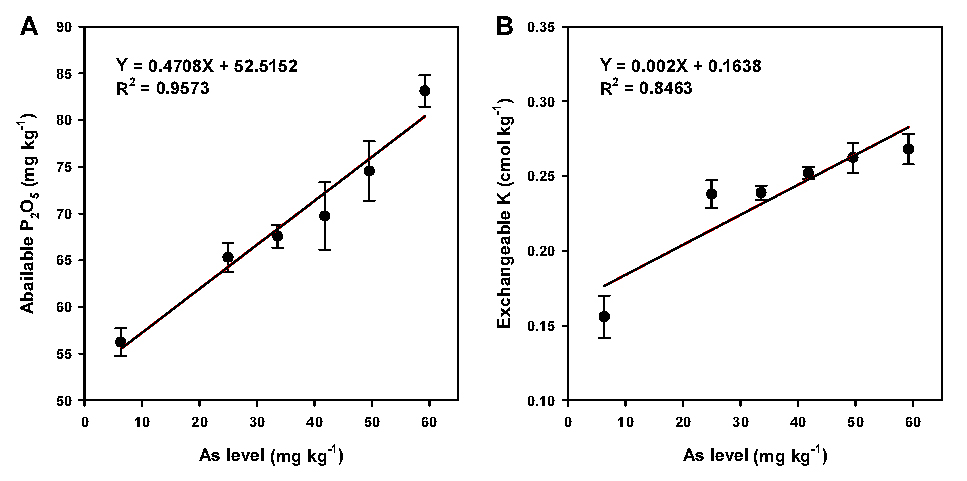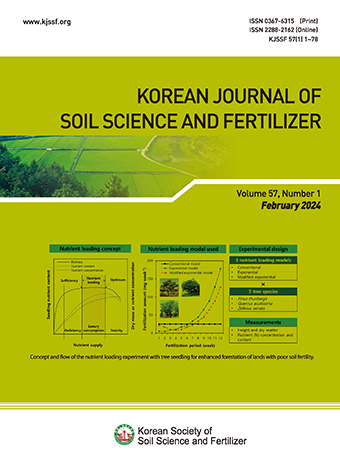Original research article
Abstract
References
Information
Antoniadis, V., S.M. Shaheen, E. Levozou, M. Shahid, N.K. Niazi, M. Vithanage, Y.S. Ok, N. Bolan, and J. Rinklebe. 2019. A critical prospective analysis of the potential toxicity of trace element regulation limits in soils worldwide: Are they protective concerning health risk assessment? - A review. Environ. Int. 127:819-847.
10.1016/j.envint.2019.03.03931051325
Siddiqui, M.H., S. Alamri, M.N. Khan, F.J. Corpas, A.A. Al-Amri, Q.D. Alsubaie, H.M. Ali, H.M. Kalaji, and P. Ahmad. 2020. Melatonin and calcium function synergistically to promote the resilience through ROS metabolism under arsenic-induced stress. J. Hazard. Mater. 398:122882.
10.1016/j.jhazmat.2020.12288232516727
Yun, S.W., S.I. Kang, H.G. Jin, H.J. Kim, Y.C. Lim, J.M. Yi, and C. Yu. 2011. An investigation of treatment effects of limestone and steel refining slag for stabilization of arsenic and heavy metal in the farmland soils nearby abandoned metal mine. Korean J. Soil Sci. Fert. 44(5):734-744.
10.7745/KJSSF.2011.44.5.734
- Publisher :Korean Society of Soil Science and Fertilizer
- Publisher(Ko) :한국토양비료학회
- Journal Title :Korean Journal of Soil Science and Fertilizer
- Journal Title(Ko) :한국토양비료학회 학회지
- Volume : 54
- No :4
- Pages :601-609
- Received Date : 2021-11-02
- Revised Date : 2021-11-20
- Accepted Date : 2021-11-23
- DOI :https://doi.org/10.7745/KJSSF.2021.54.4.601




 Korean Journal of Soil Science and Fertilizer
Korean Journal of Soil Science and Fertilizer








